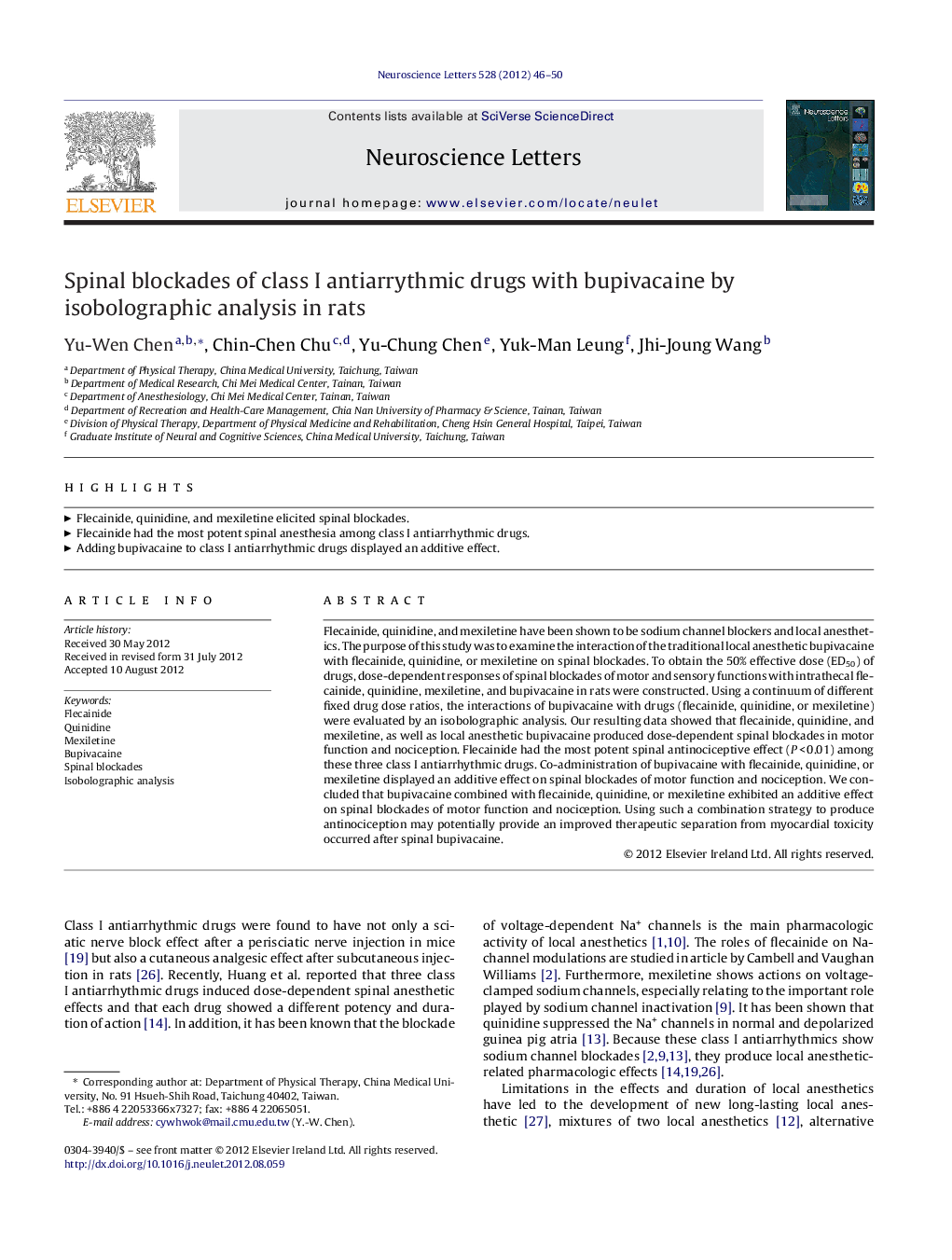| کد مقاله | کد نشریه | سال انتشار | مقاله انگلیسی | نسخه تمام متن |
|---|---|---|---|---|
| 4344195 | 1296639 | 2012 | 5 صفحه PDF | دانلود رایگان |

Flecainide, quinidine, and mexiletine have been shown to be sodium channel blockers and local anesthetics. The purpose of this study was to examine the interaction of the traditional local anesthetic bupivacaine with flecainide, quinidine, or mexiletine on spinal blockades. To obtain the 50% effective dose (ED50) of drugs, dose-dependent responses of spinal blockades of motor and sensory functions with intrathecal flecainide, quinidine, mexiletine, and bupivacaine in rats were constructed. Using a continuum of different fixed drug dose ratios, the interactions of bupivacaine with drugs (flecainide, quinidine, or mexiletine) were evaluated by an isobolographic analysis. Our resulting data showed that flecainide, quinidine, and mexiletine, as well as local anesthetic bupivacaine produced dose-dependent spinal blockades in motor function and nociception. Flecainide had the most potent spinal antinociceptive effect (P < 0.01) among these three class I antiarrhythmic drugs. Co-administration of bupivacaine with flecainide, quinidine, or mexiletine displayed an additive effect on spinal blockades of motor function and nociception. We concluded that bupivacaine combined with flecainide, quinidine, or mexiletine exhibited an additive effect on spinal blockades of motor function and nociception. Using such a combination strategy to produce antinociception may potentially provide an improved therapeutic separation from myocardial toxicity occurred after spinal bupivacaine.
► Flecainide, quinidine, and mexiletine elicited spinal blockades.
► Flecainide had the most potent spinal anesthesia among class I antiarrhythmic drugs.
► Adding bupivacaine to class I antiarrhythmic drugs displayed an additive effect.
Journal: Neuroscience Letters - Volume 528, Issue 1, 18 October 2012, Pages 46–50